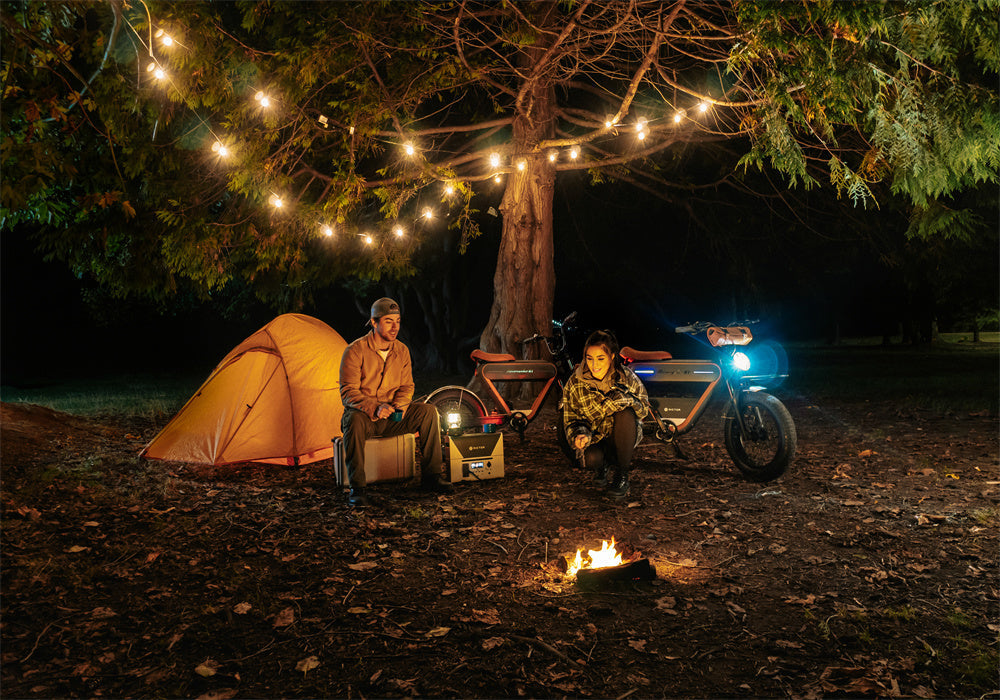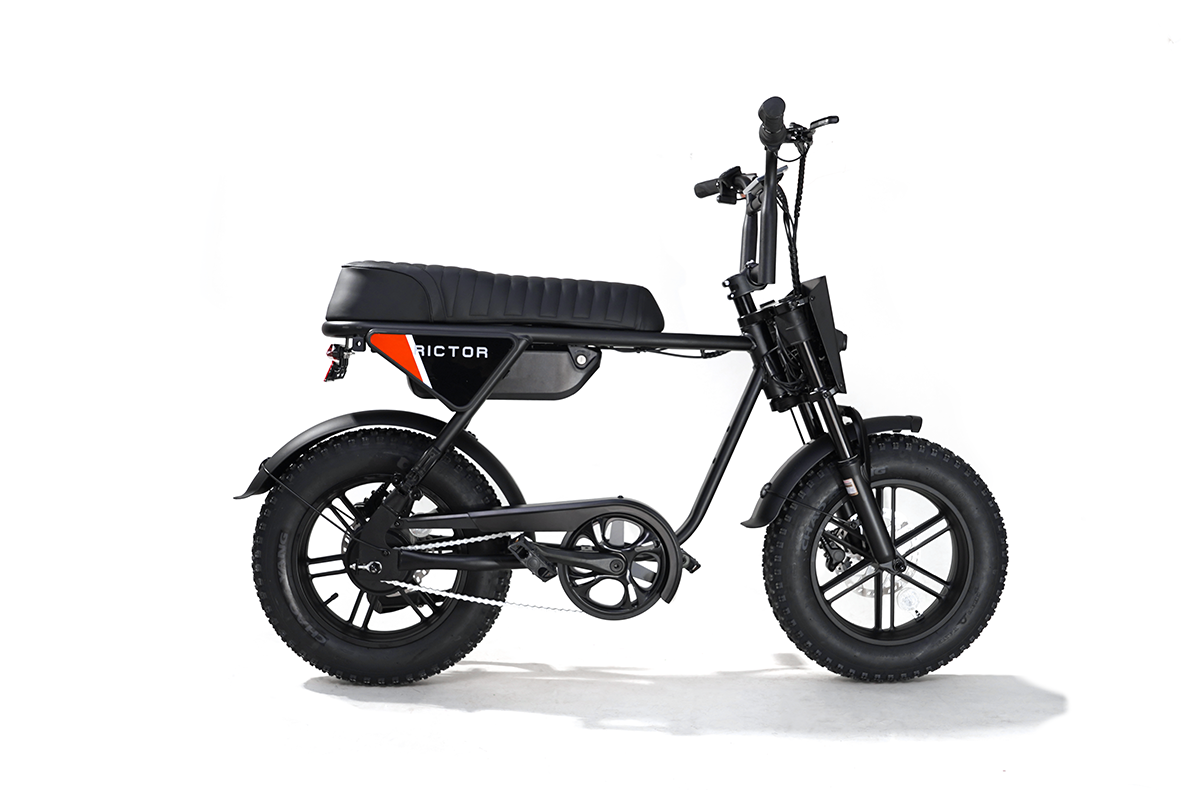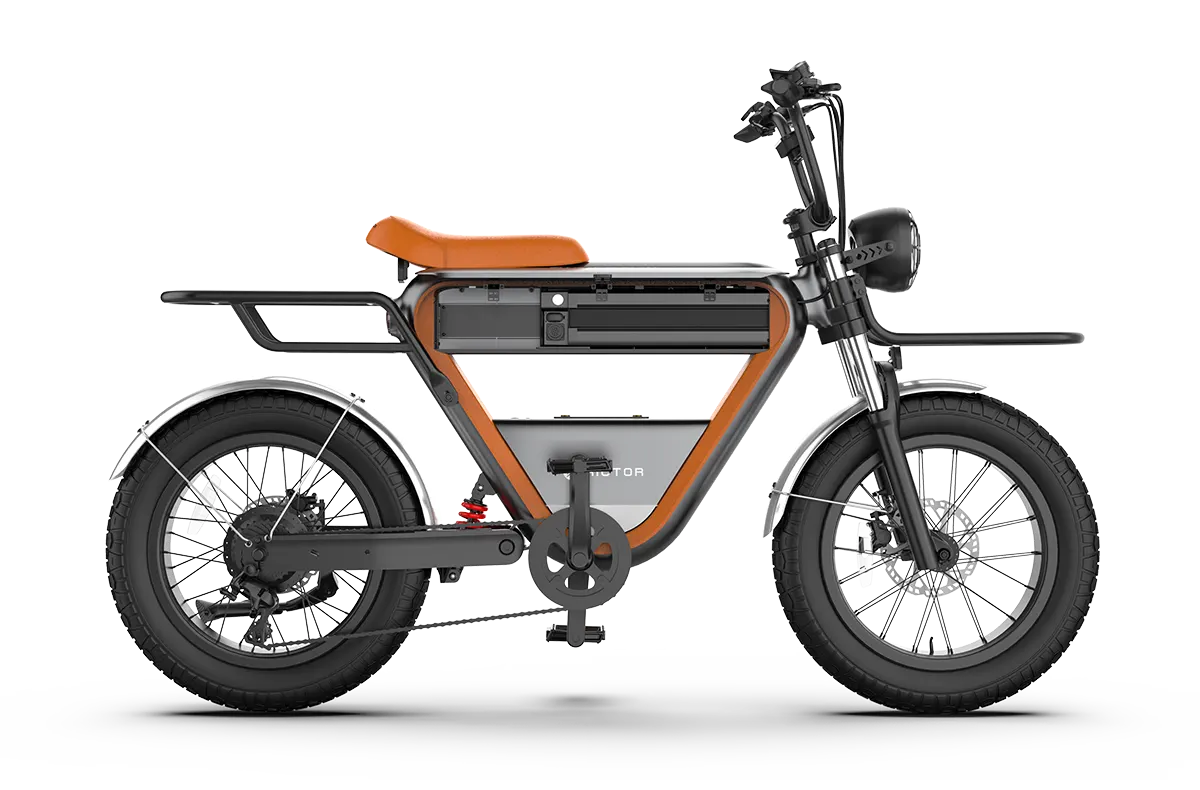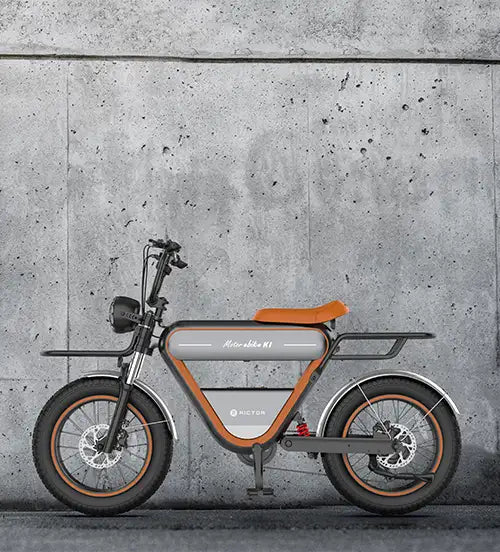
How Much Tire Pressure Your E-Bike Needs
Too much or too little pressure can affect everything from your electric bikes' comfort and performance to the longevity of your tires. Knowing exactly how much tire pressure your e-bike needs is essential to getting the best experience, whether you're commuting to work or hitting the trails for a weekend ride.
Electric Bike Tire Pressure
Tire pressure plays a vital role in your e-bike's handling, safety, and efficiency. When your tires are underinflated, you risk poor handling, increased rolling resistance, and faster wear. Overinflating can lead to a harsh ride, reduced traction, and a higher chance of blowouts.
To find the right pressure, you’ll need to consider several factors, including the type of terrain you ride on, your weight, and your bike’s specifications. E-bike tire pressure typically falls between 40-70 psi for most riders, but it can vary based on these factors.
SEE ALSO How to Unlock the Speed Limit on My Ebike
Factors That Impact E-Bike Tire Pressure
1. Type of Terrain
The type of terrain you’re riding on will influence your tire pressure. Road tires on smooth pavement can handle higher pressures, often ranging from 60-80 psi, for reduced rolling resistance and improved speed. Off-road tires, on the other hand, need lower pressures—usually between 40-60 psi—for better traction and shock absorption on rugged surfaces.
For trail riding or mountain biking, lower pressure provides more grip and comfort on rocky or uneven terrain.
If you’re mostly on smooth city roads or bike lanes, you’ll want a higher tire pressure to minimize rolling resistance.
2. Rider Weight
Your weight plays a significant role in determining the right tire pressure. Heavier riders will generally need to inflate their tires to the higher end of the range. This helps prevent tires from bottoming out and improves their overall performance.
For instance, if you weigh more than the average rider, you might want to inflate your tires to 60-70 psi (or higher if your bike manufacturer recommends it). Lighter riders can stick closer to the lower end of the spectrum for a more comfortable ride.
3. Tire Type and Size
E-bikes come in various tire types and sizes, and this will also dictate how much air you need. A larger tire often requires lower pressure to provide the right balance between comfort and performance, while smaller tires may need more air to provide adequate support.
Fat tires on electric bikes often need between 10-30 psi depending on their size, as they are designed to handle loose surfaces and provide maximum grip.
Standard tires typically range between 40-70 psi, depending on your riding style and needs.
4. Environmental Conditions
Temperature and climate can also impact your e-bike tire pressure. Tire pressure naturally decreases in cold weather and increases in hot weather, so it’s important to check your tire pressure regularly, especially during seasonal changes.
Cold temperatures cause the air inside your tires to contract, lowering the pressure.
Warm weather causes the air to expand, potentially increasing the pressure beyond the recommended levels.
This means that, depending on your climate, you might need to adjust your tire pressure more often than you think.
How to Check and Adjust E-Bike Tire Pressure
To get the most out of your electric bike, checking and adjusting the tire pressure is a simple yet essential task. Here’s how you can do it:
Get a Tire Pressure Gauge: Invest in a good-quality tire pressure gauge. You can choose between digital or analog versions, but ensure it’s compatible with the valve type on your e-bike tires.
Check the Manufacturer’s Recommendation: Look for the recommended tire pressure marked on the sidewall of your e-bike tire. This is the optimal range suggested by the manufacturer.
Use a Pump with a Pressure Gauge: A pump with a built-in pressure gauge can help you achieve the perfect tire pressure quickly and easily.
Make Small Adjustments: If your tires are underinflated, add air slowly. If they’re overinflated, release a little at a time. Be sure to check the pressure after each adjustment to get it just right.
Tire Pressure Tips
Check tire pressure before each ride to ensure optimal performance.
If your e-bike is equipped with suspension (front or rear), make sure it’s correctly set for your weight in addition to your tire pressure.
When storing your e-bike for long periods, try to keep the tires inflated to the manufacturer’s recommended level to avoid damage over time.
Why Tire Pressure Matters for Your E-Bike
Correct tire pressure doesn’t just make your e-bike ride smoother—it plays a significant role in your safety and efficiency. When your tires are properly inflated, it can enhance your braking performance, cornering stability, and overall control. Well-inflated tires also help reduce the risk of flats, blowouts, and tire damage, keeping you safer on the road.
Maintaining the right pressure is key to improving efficiency. Proper tire inflation reduces friction, allowing your e-bike to travel farther on the same battery charge. This also helps prevent unnecessary strain on your motor, ensuring it operates at its best without being overworked.
When your tires are at the correct pressure, your ride will be more comfortable. Properly inflated tires absorb bumps and vibrations better, providing a smoother, more enjoyable experience. This comfort makes a big difference, especially on long rides or rougher terrains.
Lastly, keeping your tires properly inflated can help with longevity. Regularly checking and adjusting your tire pressure prevents premature wear and tear, which means you won’t have to replace your tires as often, saving you money in the long run. Proper inflation ensures that your tires remain in good condition, extending their lifespan.
Conclusion
Maintaining the right tire pressure for your e-bike, like the Rictor adult fat tire bike, is key to enjoying your ride. It not only impacts your comfort and performance but also ensures that your bike operates safely and efficiently. The correct tire pressure depends on several factors, including your riding style, the type of terrain, your weight, and the type of tires you have. Make sure to check your tire pressure regularly and adjust it as needed to keep your electric bike running smoothly for years to come.
FAQs
How often should I check my e-bike tire pressure?
It's a good idea to check your e-bike tire pressure before every ride to ensure optimal performance, especially if you're using it frequently.
What happens if I overinflate my e-bike tires?
Overinflating your e-bike tires can lead to a harsh ride, decreased traction, and increased risk of blowouts. Always stick to the manufacturer's recommended range.
Can I use the same tire pressure for off-road and road riding?
No, off-road riding generally requires lower pressure to ensure better grip and shock absorption, while road riding benefits from higher pressure to reduce rolling resistance.





